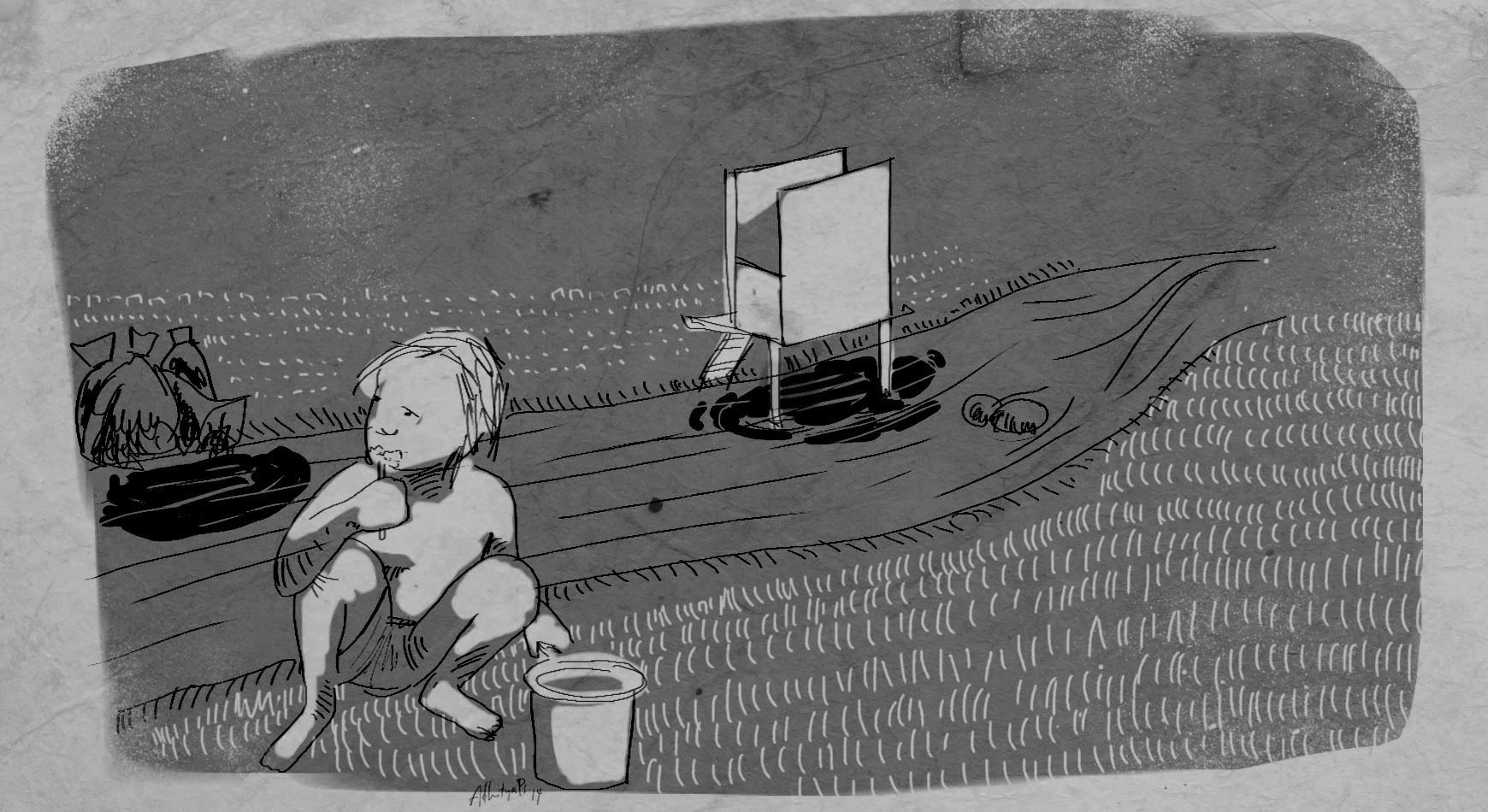On the fourth day of my new employment seven years ago, I was assigned to write a report on an activity called “field school” held in a remote village on top of the Lembang area in Bandung, West Java. The office that I jokingly called the “anti-diarrhea firm” is a foreign-funded project aimed at helping the Indonesian government reduce diarrhea mortality among mothers and children in nine focus sites across Indonesia. And a field school is basically a gathering in our intervention area where we discussed various topics to find out the needs and wants of local communities.
That day, we talked about the cause of diarrhea. For years the village is known for its high diarrhea incidence. Although it was located just one hour and a half from the governor’s office, little to nothing had been done to overcome the health problem, except a donation of a box of oralit (diarrhea medicine), when the news of the epidemic broke on the local media.
The field school turned into a lively discussion, with everyone from ustad (Islamic teacher) to housewives voiced their concern. But what startled me was that most of the ideas they had about diarrhea ranged from old wives’ tales to fairy-tale materials. A young mother said that a small child suffered from diarrhea should not be treated because it is a sign that the child is growing up well.
Another answer from a young farmer both shocked and amused me: “Last week my son saw a horse and I knew that he’ll have diarrhea in the next few days. And my prediction came true.”
I giggled so hard that I earned a cold look from the field staff.
It’s been seven years since I wrote that report. I am now working in a project in North Sumatera that connects natural resources conservation with sustainable development initiatives. In order to introduce big and rather confusing ideas such as carbon credit or REDD+, we often used community engagement activities such as healthy lifestyle and sanitation improvement as entry points of the project intervention.
One of our targeted communities is a century old pesantren (Islamic boarding school) with 5,000 male students living in humble huts along a river basin across their school. These boys have no qualms about throwing their cigarette butts, noodle packages and shampoo sachets everywhere. Even worse, I don’t see any toilets around. When I asked a student about this condition, once again I was given a head scratch-inducing local wisdom.
“Of course we all do it in the river, but don’t worry. Our ustad has prayed for the river, so that the water running downstream will not be contaminated with our feces.”
In the morning, just downstream from this school, you can easily spot school children bathe and get dressed in the exact same water the pesantren students go to do the number two. Very few houses have toilets, but instead of installing one, during a celebration of the district’s anniversary, the government put in place LED lights in dizzying colors to illuminate cigarette ads showing how cool smoking is.
Proper sanitation and healthy lifestyle is hardly a priority among local administrations. A discussion about development with government officials usually ends with requests to help them build more roads, ruko and other buildings, things that will make their district look more like a city than a jungle.
Experience has taught me that behavior change is one the hardest battles in development, but there is still something we can do to win it.
Back in late 1960s, sanitation and unhygienic lifestyle was also a huge problem in the United States. To overcome the problem, the American government launched a national campaign that began with teaching healthy lifestyle to children in kindergarten. Educating small children is considered one of the most tactful strategies to cut a bad habit and make a campaign message sustainable.
While a nation-wide campaign is an ideal way to overcome sanitation problem, it will be hard to rely on the government alone, judging from the civil servants’ preference for a game of ping-pong over field assessments.
Community empowerment is the key to turning the table. Existing community groups such as karang taruna (youth group), PKK (women group), church choirs, or prayer congregations can be used as agents of change. Healthy lifestyle messages can be embedded into their activities. The members of these groups can also be used as “health cadres” to visit houses in their villages and teach simple hygiene practices such as hand washing with soap or boiling drinking water. An approach to local public figures such as lurah (head of village) and ustad is also essential. Small capital can go a long way, to fund and assist members of karang taruna, for example, to build personal toilets in their communities through a micro credit scheme.
Once the community-based activities are rolling, it is time for a bigger challenge: convincing local governments to include sanitation improvement in their development plans. Since they have such big appetite for buildings and infrastructure, donor agencies or NGOs can assist them in allocating their budget for the construction of sanitation facilities such as communal toilets or hand-washing stations. If they say budget is an issue, try to work on a drafting district or village regulation that prohibits people from doing unhygienic practices, such as open defecation or littering.
These efforts might not yield instant results, but it is a start. And one day perhaps people may stop blaming horses for their bowel activities.
About Aloysius Prayitno
Aloysius was a copywriter in a PR company before jumping into development sector nearly a decade ago. He is working on finding a balance between SNL skits and Jimmy Fallon comedy, and corny jokes from local government officials he secretly enjoys.








Comments